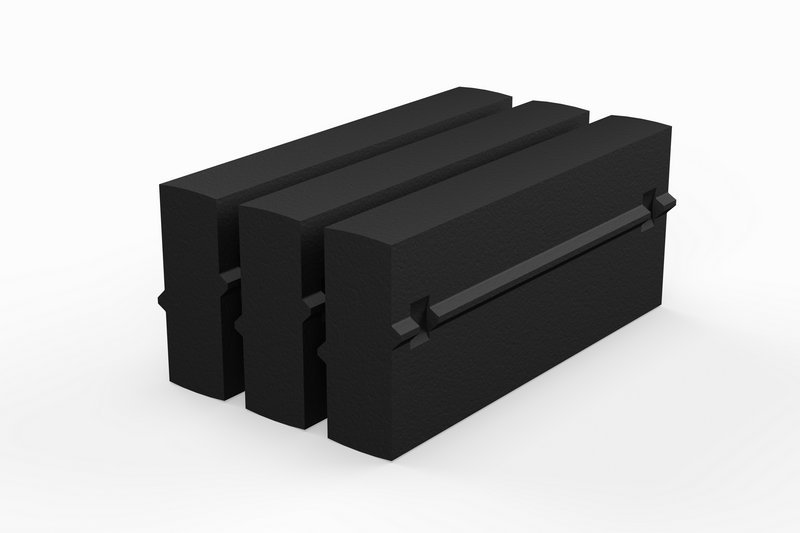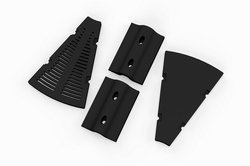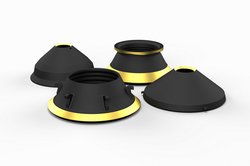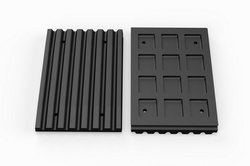Introduction
The selection of the liner type and material for impact crushers is fundamental to ensure its desired performance.
The impact bars must be chosen according to the material type, abrasion, foreign elements and size at the feeding and the required product, so that best properties of different metallic alternatives may be used.
Typically wearing parts include blow bars, breaker plate liners and side wear plates.
The blow bar is the component of an impact crusher most strongly subjected to mechanical stress. It accounts for 60 to 70% of the wear costs.
Therefore the wear is the most important on blow bars because the most reduction work takes place when the particle are struck by the blow bars.
Deya Machinery impact bar features
• Long wear life
• Easy maintenance
• Better performance
• Improved reliability
Influencing factors on blow bar wear
Feeding material is the most important factor for selecting the correct blow bar. To increase the life of blow bars the following guidelines should be adhered to:
• Maintain and clean chamber daily.
• Inspect blow bars for premature wear or damage.
• Select correct blow bars depending on application.
• Adjust machine parameters
Key factors to consider
There are a few key points to consider when selecting the correct blow bar for an application:
• The type of material being crushed.
• The size of the feed.
• Material shape, cubic or plate like.
• Abrasiveness.
Strike bar material types
1. Manganese
This alloy is used in primary crushers or crushers that have tramp iron in the feed. Manganese steels will be used whenever very high shock resistance or some elongation is needed. The blow bar life is not easily predictable and depends on many factors.
2. Martensitic Alloy Steel
Martensitic steel will be used whenever hardness and impact resistance are both needed. Generally, martensitic steel have a higher lifetime than Mn steels in more abrasive applications when the feed size is below 900mm. It is used in primary and recycling applications
3. White Cast Iron
White irons are used when the shock level is rather low and the castings rather thick. Feed to the crusher must be well prepared as far as top size and must be free of tramp iron.
Because of the brittle nature of this alloy, tramp iron will cause catastrophic failure of the blow bars. This material is used in secondary, tertiary and asphalt recycle applications where there is no tramp iron.
When and how to change wear parts
In order to avoid damage to the rotor, blow bars should be replaced before they are worn through.
Blow bars are reversible. When one face is used, the blow bar can be turned around to use the other face. This procedure can only be done once.
In order to maximize the lifetime of the breaker plates, it is not necessary to change whole set of the liners. Different positions have different wearing conditions, just change liners places or change just the worn ones.
Change procedures
• Open the crusher housing
• Release the wedge locking pin
• Lower the lifting tool and hold down the impact bar.
• Lift the impact bar and flip to any one of the four available positions.
• Lower the impact bar and place into position on the rotor.
• Re-install the wedge locking pin and close the housing using the built-in hydraulic cylinders.





